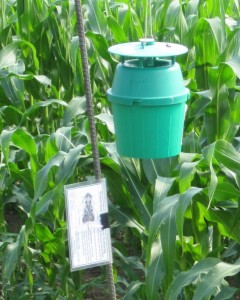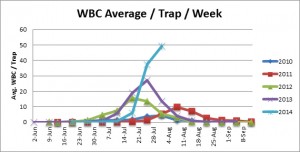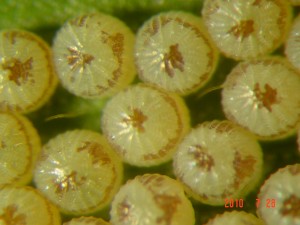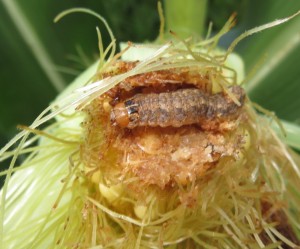Western bean cutworm — call it WBC for short — is a new pest to us, though farmers in the Midwest and Canada have been battling it for several years. Since field corn contributes $685 million to New York’s economy while sweet corn rings in at $68 million, we can’t take this threat lightly. These green traps — and the dedicated cooperators who monitor them — help us keep tabs on where adult moths are showing up. For though adults don’t damage plants, their cutworm larvae do.

The largest capture this week was 516 moths in St. Lawrence County — and numbers are really begin spiking now. Meanwhile, data from the Midwest suggests we start looking for egg masses and larvae when accumulated trap counts exceed 100 moths per trap. Which means we’re out there and looking for the distinctive egg masses WCB moths lay.

Meanwhile, just one WBC larva per ear could cause losses of as much as 3.7 bushels per acre. And while WBC aren’t the only worms (as the larvae you often find in corn are called) than can hammer corn, other species are cannibalistic — they don’t take kindly to competition in the same ear. By contrast, WBC larvae don’t mind company and you might find two or three in the same ear.
Another problem: damaged kernels might leave corn vulnerable to attack by molds — including some that produce mycotoxins. Mycotoxins can be bad news for livestock — and us. True, not all molds are harmful. Still, we need to be on our toes, because mycotoxins are serious business.
Want to stay informed? Visit our weekly field crops post. For sweet corn, go here (for western NY) or here for info elsewhere in NY — and all the way to the Great Plains.

